The cornflower bolete is a beautiful, edible bolete mushroom that stains a vibrant blue when cut. It's a delicious cousin to porcini mushrooms every forager should know.
If there's a better foraging parlor trick than showing someone whose never seen it a mushroom stain deep blue after being cut I don't know it. Gyroporus cyanescens a.k.a the cornflower (as in cornflower blue), or blueing bolete is probably the best example I know of for a mushroom that stains blue after being cut that's really worth getting to know.
Contrary to the "rule of thumb" some people go by that rules out boletes for edibles if they stain blue, Gyroporus cyanescens is completely edible, and delicious. With it's staunch resistance to bugs, I might even say I prefer cooking it fresh to porcini (the heresy!)--It's true though.
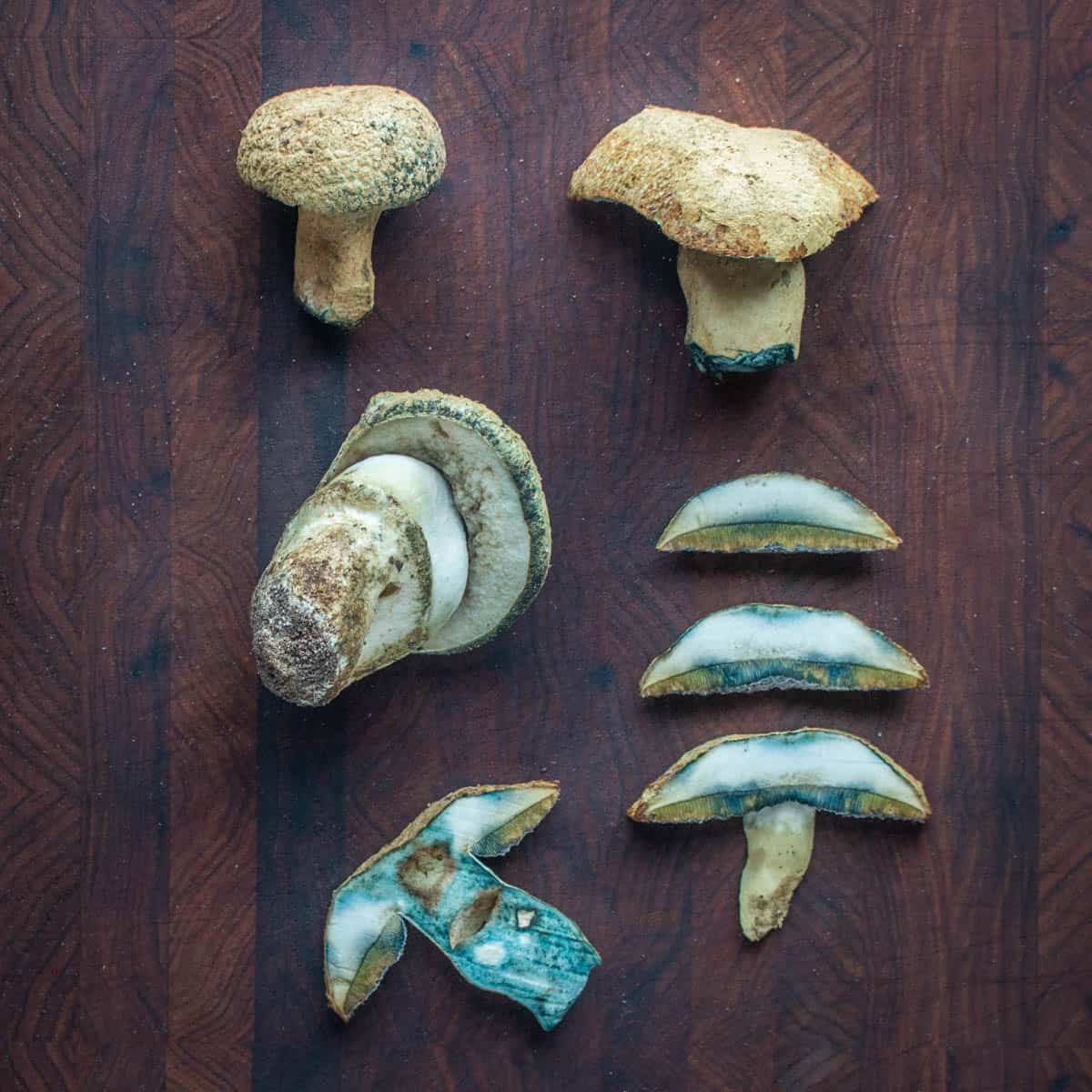
Habitat
I typically find Gyroporus cyanescens in the summer when I'm out hunting things like chanterelles and black trumpet mushrooms in hardwood forests with plenty of oaks, but I've seen them in more mixed woods heavy on the aspen too, especially in Northern Minnesota. Unlike chanterelles and trumpets, it seems like their mycorhyzal relationship could be more with the ground itself than specific trees, according to some of the experts, which would account for people seeing it in odd places like meadows with no trees in sight.
The Key: Sandy Soil
Thankfully, there's a good indicator for where you might find them: the soil. Just like black trumpets have a definite affinity for sphagnum moss where I live, cornflower boletes love, love, love sandy soil. I have one place I go to where just about every year I can count on finding a few of them, and it is only in a small area where the ground turns sandy in the middle of the woods. Keep that in your hat for a rainy day, and remember the next time your out in the summer hunting for mushrooms.
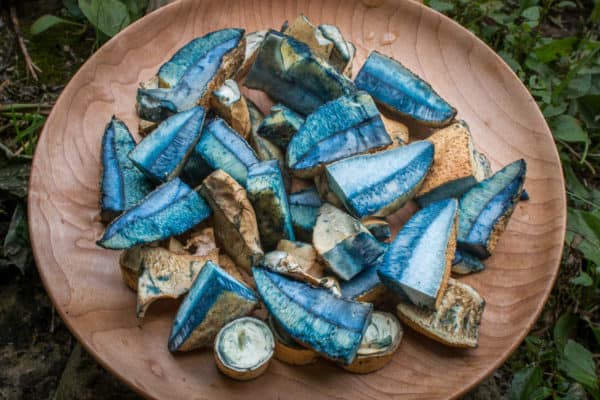
Another thing to keep in mind is how these fruit. Unlike porcini that can often congregate in dense clusters, or at least within a few hundred feet, Gyroporus cyanescens, and it's cousin castaneus (the also delicious, if small chestnut bolete) grow singularly. They grow alone. What this meant, at least for me, was that, while, picking other mushrooms, I'd innevitably pick one or two here and there, but I figured they were never worth focusing on as I couldn't find giant flushes of them. I was wrong. Here's how I think of them now.
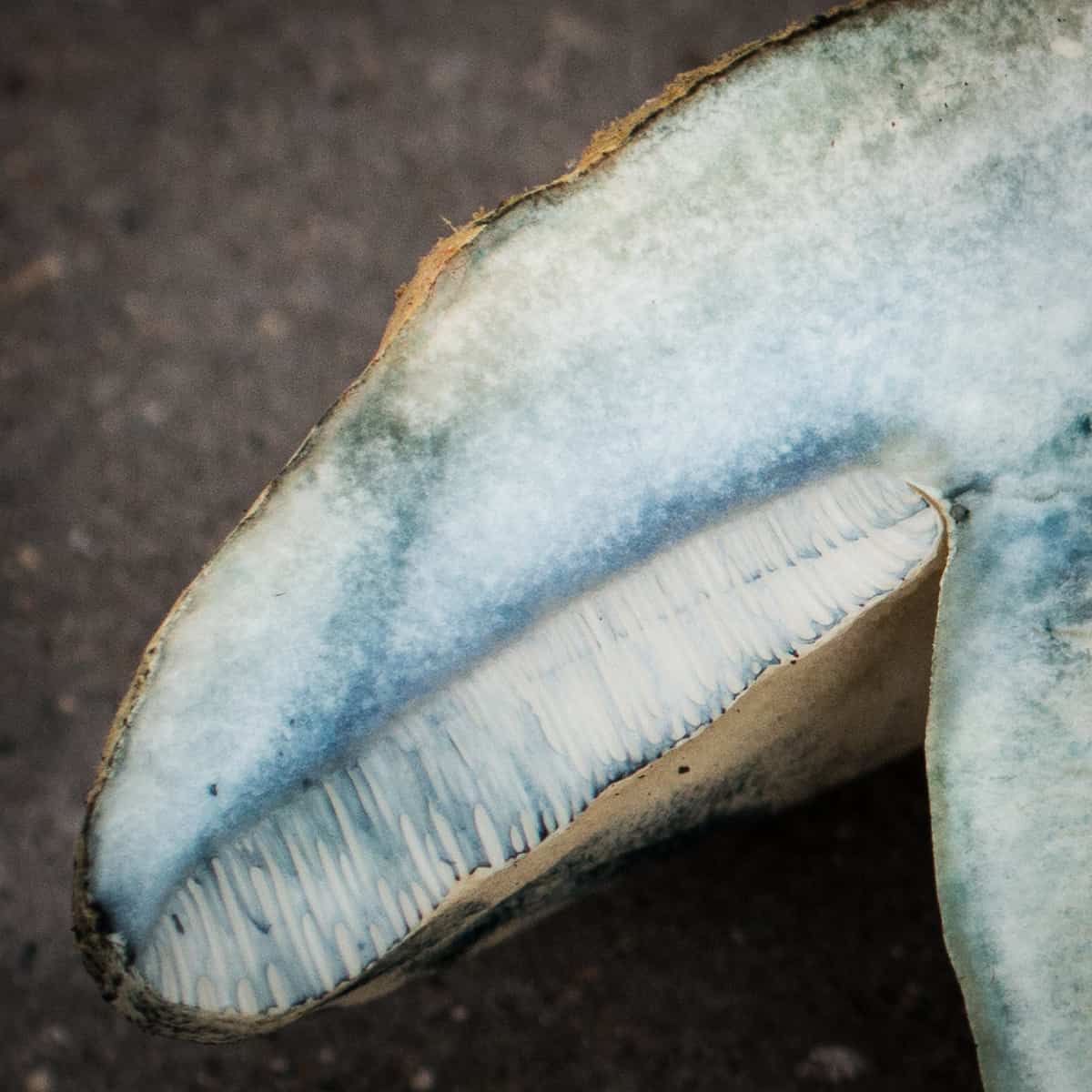
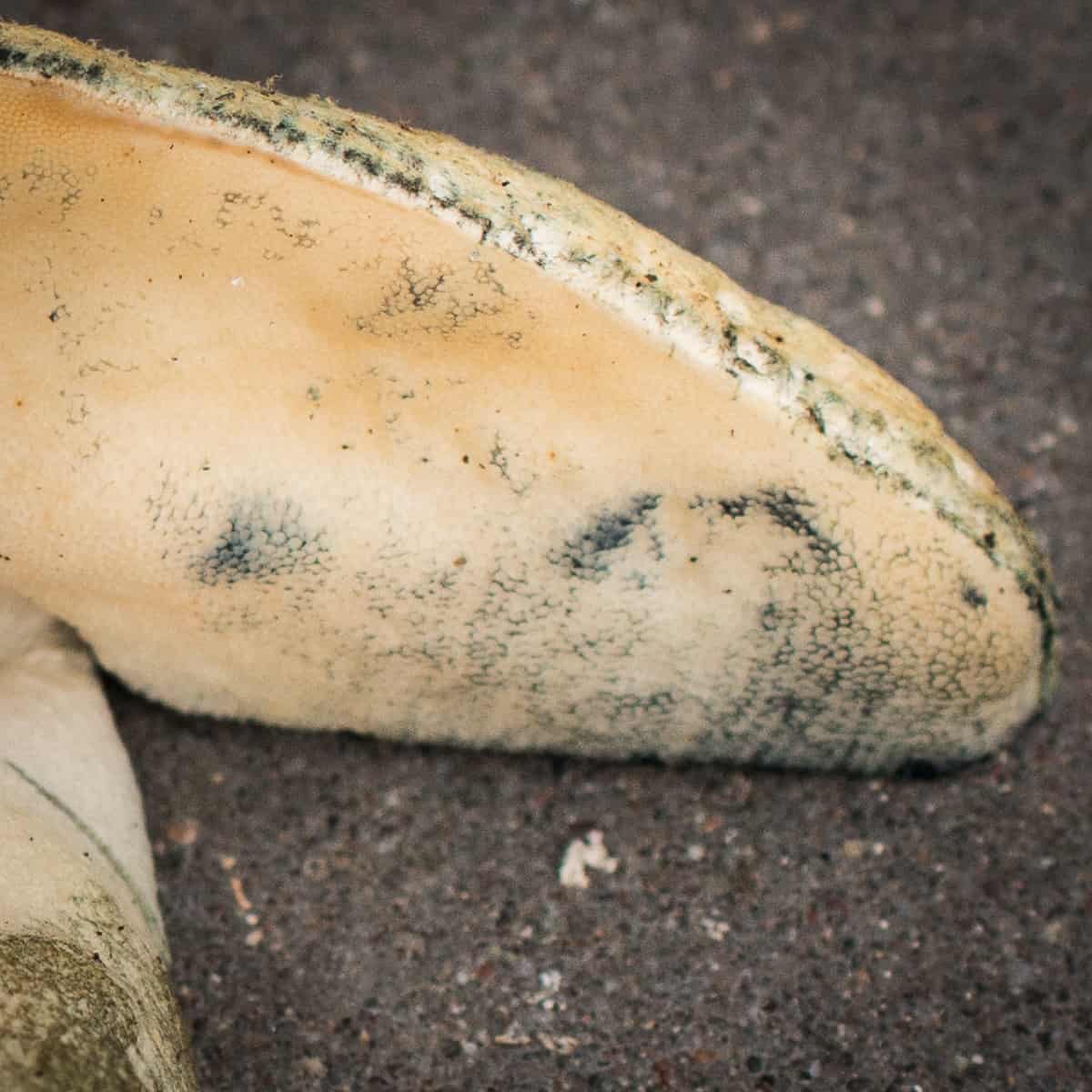
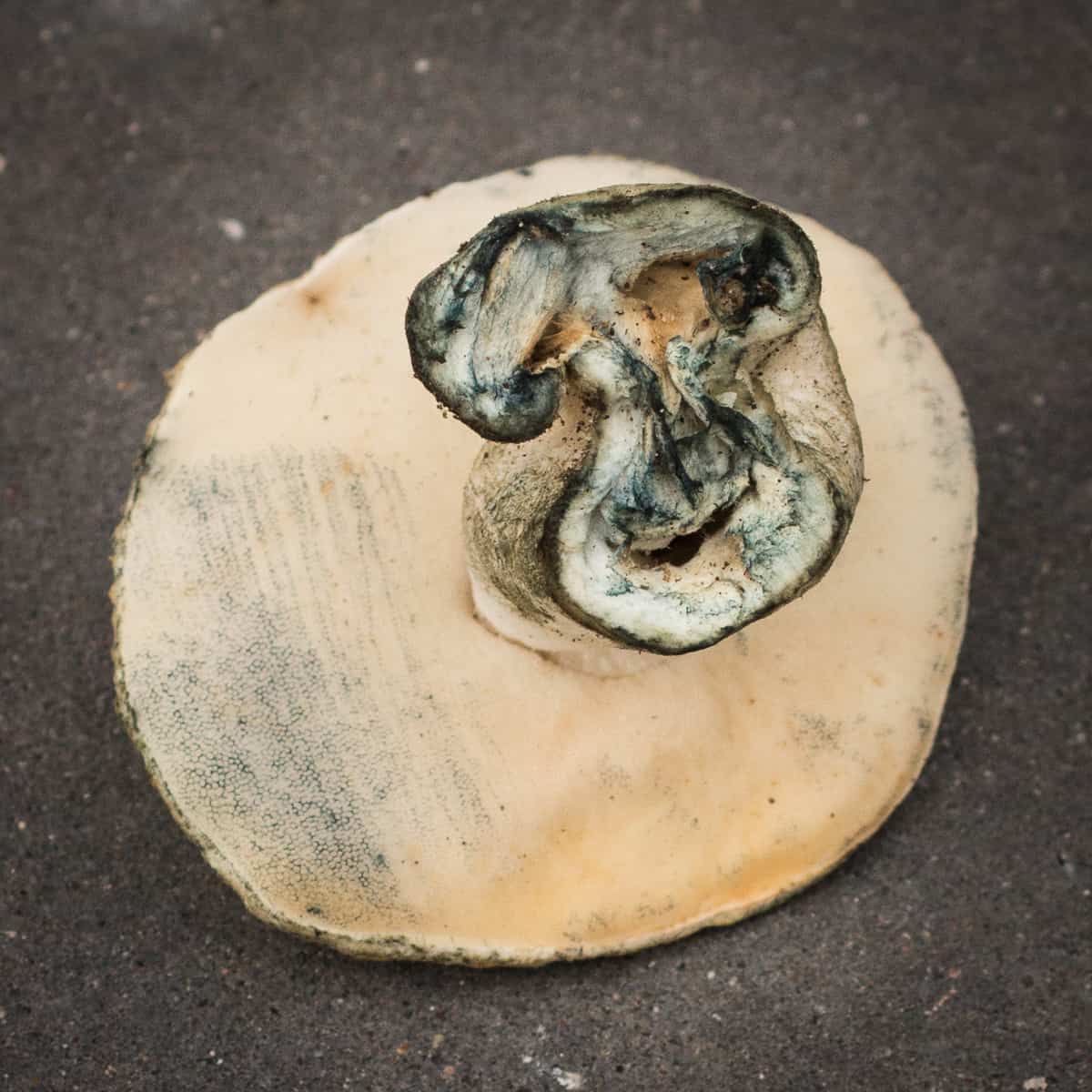
Hunting mushrooms that grow singularly, and scattered
Think of picking these boletes as if the patch were really, really big. They're scattered, so you may find one here and there, but if you pick everyone you see, and purposefully seek them out, you absolutely can get a good harvest of these mushrooms. The same thing goes for Gyroporus castaneus. Just because you don't see a bunch doesn't mean they're not there, it may just mean they're spread out a bit, and collecting enough for a meal will take a little time.
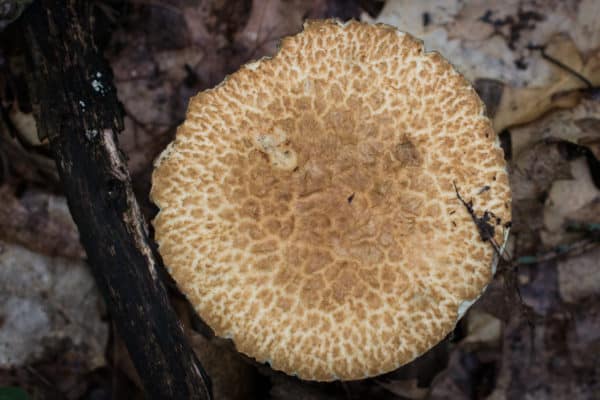
Alan's ID points
I've been hunting this one for a while, and there's a few characteristics that don't get mentioned sometimes that I find helpful.
- The stem is sometimes, but not always hollow, or hollow near the base
- The cap is often crackled looking, very different from lots of other boletes sans Suillus pictus

Cooking
Like I mentioned before, these mushrooms have a fantastic resistance to bugs, absolutely bulletproof. In fact, I'd wager that I've never even picked a cornflower bolete with bugs in it. With most other boletes I pick, with the exception of a few in the Leccinum genus, I often have to dry the mushrooms since there is bug damage, especially with porcini. With cornflower boletes though, you can eat them fresh, and, in my opinion, they're best like that.
The flavor is ok, dried, but cooking up fresh boletes is such a rare treat, I think it's great to toss them in a pan and have them however you like. These have a great, rich flavor, with a hint of the delicious nuttyness you'll get with other boletes, most similarly their delicious nutty tasting cousin the chestnut bolete.
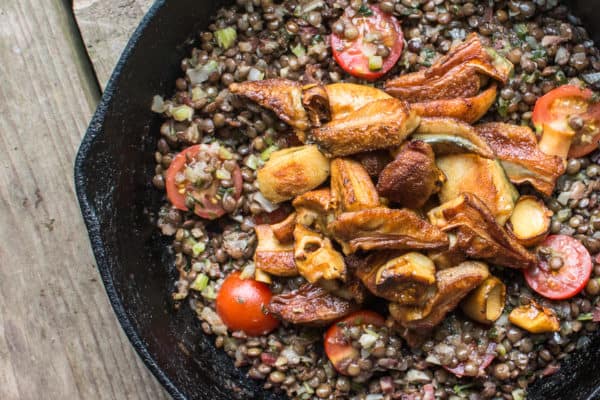
The simple recipe I made with my last haul of them follows--it's a good, simple side dish or vegetarian entree based off of one I ate in the south of France made with Amanita caesarea. It's quite good, but there's nothing wrong with frying them up in butter too!
Warm French Lentils with Sauteed Wild Mushrooms
Equipment
- 2 10 inch cast iron skillets or similar
Ingredients
- 2 cups cooked lentils du puy or black lentils
- Kosher salt to taste
- 1 handful chopped fresh herbs a mix of parsley, cilantro, lovage, dill, or other fresh garden herbs, plus extra for finishing
- 2 oz bacon Optional
- Extra virgin olive oil as needed for cooking and extra for drizzling
- High heat cooking oil as needed for cooking the mushrooms, a tablepoon or two
- Fresh lemon wedges for serving
- Handful of fresh cherry tomatoes halved
- 2 oz Half a stalk of celery
- 2 oz shallot or onion
- 1 medium sized clove of garlic
- Dash of white wine
- 4 oz fresh mushrooms thickly sliced
- Fresh ground black pepper
Instructions
- Finely mince the bacon if using, garlic, celery and shallot or onion, then sweat with the oil for a few minutes.
- Add the wine and cook off, then add the lentils and some of their reserved cooking liquid and simmer for a bit until the vegetables are soft. The pan should stay juicy, so add a little extra liquid if you need.
- Double check the seasoning and adjust to taste, then toss in a handful of halved cherry tomatoes at the end just to warm them through.
- Meanwhile, heat a tablespoon of cooking oil in a pan and brown the mushrooms well, then season lightly to taste with salt and pepper.
- To serve, toss the lentils with some of the extra herbs, a good drizzle of oil, and spoon the mushrooms over the top, passing the lemon wedges alongside. You can also serve them from a larger dish family style.
Notes
Substitutions
French lentils are wonderful, but you can also use black beluga lentils or white lentils. In a pinch, regular brown lentils will work. Red or yellow lentils are too soft to use here.Nutrition
More
35 Essential Wild Mushrooms Every Forager Should Know

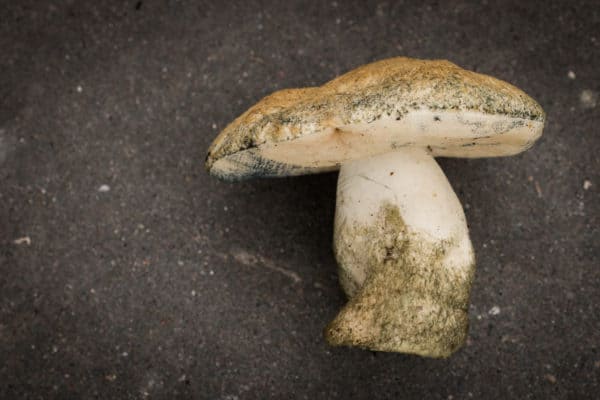
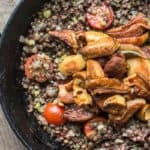
Chris L.
Another mushroom badge for me. Yesterday I found 6 or 7 of these. I recognized then through knowledge gained reading mushroom varieties here on your sight. Thanks, very much! I have dubbed my 2024 mushroom foraging: "Leaps & Bounties". I must "tip my (mushroom)cap" to you! 😉
Alan Bergo
Hey congrats Chris these are a great mushroom.
Chris
Hello...
I have found a number of these over the last month and I would like to attempt cooking with them. My question is regarding the cap. The texture seems so paper bag-like and leathery. I am also concerned about it retaining grit Do you leave the skin on when you cook with them? Thanks!
Alan Bergo
Trim it with a knife or wash it with water. They grow in sandy soil so they may need some extra attention on the cleaning front.
Duncan
Do you know why most other sites say they are poisonous?
Alan Bergo
No I've never heard of that. I have many friends who enjoy them here in the Midwest.